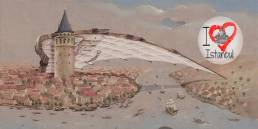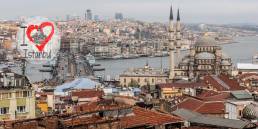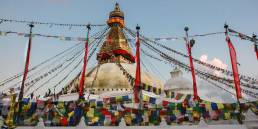I was not unaware that Nanjing was one of China’s four imperial cities and one of its oldest capitals. What surprised me a little was knowing that this was the city of the legendary and well-known Ming Dynasty, among ten other important Chinese dynasties. I think that everyone, even if we are not very knowledgeable about the history of China, have sometime heard the name of this lineage of emperors, if only because of the appreciated that is the art of this era.
Today, this city of about four million people, built on a bank of the Yangtze River, facing Japan and the Korean peninsula, is the capital of Jiangsu Province. It was precisely the Emperor Zhu Yuanzhang (1328-1398) of the Ming dynasty who proclaimed Nanjing as capital more than 600 years ago and who began the construction of its great wall to consolidate its power and sovereignty and keep the invaders away. The Nanjing Wall is one of the major historical and cultural remains of the Ming Dynasty, a masterpiece of ancient Chinese architecture that has been under state protection since 1988.
Its great wall, of military character, and a privileged site, behind the mountain and at the foot of the Yangtze River as a natural moat, made the city almost unassailable. Zigzagging along 35,267 kilometers around the city, the figures that concern its construction are overwhelming, since more than a million people worked, most of them forced, during a painful period of 21 years. The average height was that of a building of 4 floors: 12 meters. In some places the height reached 21 meters. 7 million cubic meters of land were used and according to historical records, Zhu Yuanzhang ordered 118 counties from 20 states in 5 provinces to manufacture their bricks. Each brick weighs about 10 kilos, is 40-50 centimeters, have a width of 20 centimeters and a height of 10 centimeters. In each of them are written the names of the officials who were responsible for the quality of them. These inscriptions act like a historical parchment, recording the changes produced in the wall by the different dynasties. It provides an indispensable record for the study of the history of Nanjing. Up to 350 million bricks were used to build the wall surrounding the city, an area of 60 squared km.
The Nanjing Wall consists of four parts. From the exterior to the interior first is the Exterior City, then the Inner City, the Imperial City and City Palace, the most restricted area. The City Wall we can see today is mainly a remnant of the Inner City. The Imperial City was built to protect the Palace City, known as the ‘Forbidden City’, as it is the center and the most protected part of the four walls. This would serve as a model, saving the differences, for the forbidden city of Peking. It is also possible to visit although those who already know the other will probably feel disappointed because this one is much smaller and is in a state of so-so conservation.
Of the originally thirteen gates (number up to eighteen, at the end of the Qing Dynasty) only the Zhonghua Gate in the south remain, and the Heping Gate in the north, closed to the public. Other doors are more or less better preserved or partially rebuilt. From the top the views are 360º. On the nearest plane, the ancient or “Chinese” city, with its Quinhua River canals also built by the Ming, its motley apples of old wooden houses with dark roofs and small gardens that transport us to other times, and business of artisans. On the south bank of the river, the Nanjing Porcelain Tower, also known as Bao’ensi, a unique Buddhist pagoda in design, currently under reconstruction under the patronage of a wealthy Chinese businessman, after being practically reduced to debris during the revolution of Taiping in 1850. This amazing tower, which was listed as one of the Seven Wonders of the World, functioned as a Buddhist pilgrimage center and was built by Chinese emperor Yung around the 15th century. Octagonal, 260 feet high and 97 feet in diameter, the tower was the largest building in China at the time of its construction. The new tower takes its place but the modern design of steel and glass barely recalls the old one except for the height.

And always, on the horizon the views of the new city, curdled with skyscrapers and construction cranes as far as the eye can see. You can walk it on foot or rent small vehicles that are reminiscent of those used on golf courses. In addition, inside you will find an exhibition with data, images and a model of the ensemble that helps to understand the scope of this colossal work.
Nanjing is one of the few cities in China that still retain the walls of its ancient city, 600 years have passed since its construction but there is no doubt that it retains its splendor since the wall is of a robustness and solidity well patent. Although the wall finishes of the city of Nanjing can not compete with the city wall of Xi’an, it is still the longest in the world and I am sure it will not leave you indifferent, personally it was one of the places visited Of the city that I liked the most.
The entrance by the south sector, where is the Zhonghua Door, is previous payment. The site is open to the public from 08:30 to 17:00 in the winter and from 08:00 to 18:00 in the summer, with tickets costing 50 yuan, about € 7.
Related Posts
Burma at the edge of the abyss
15 January, 2023
Hezarfen – Ahmed Celebi, story of a bird man
6 January, 2016
Bodhnath, Tibetan heart of Nepal
29 September, 2014












